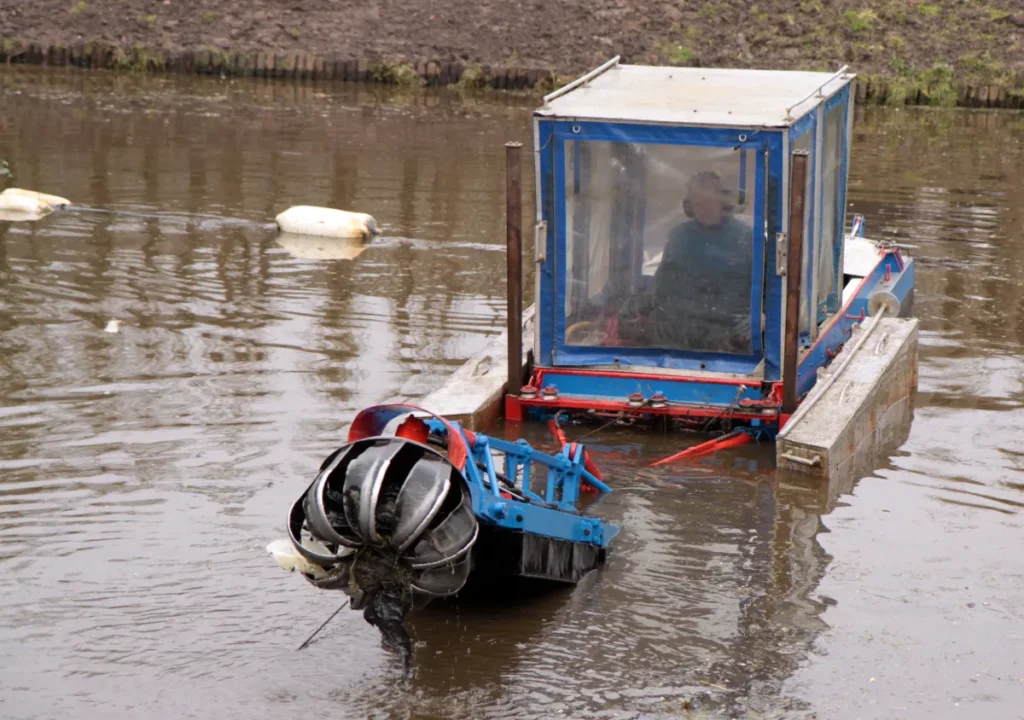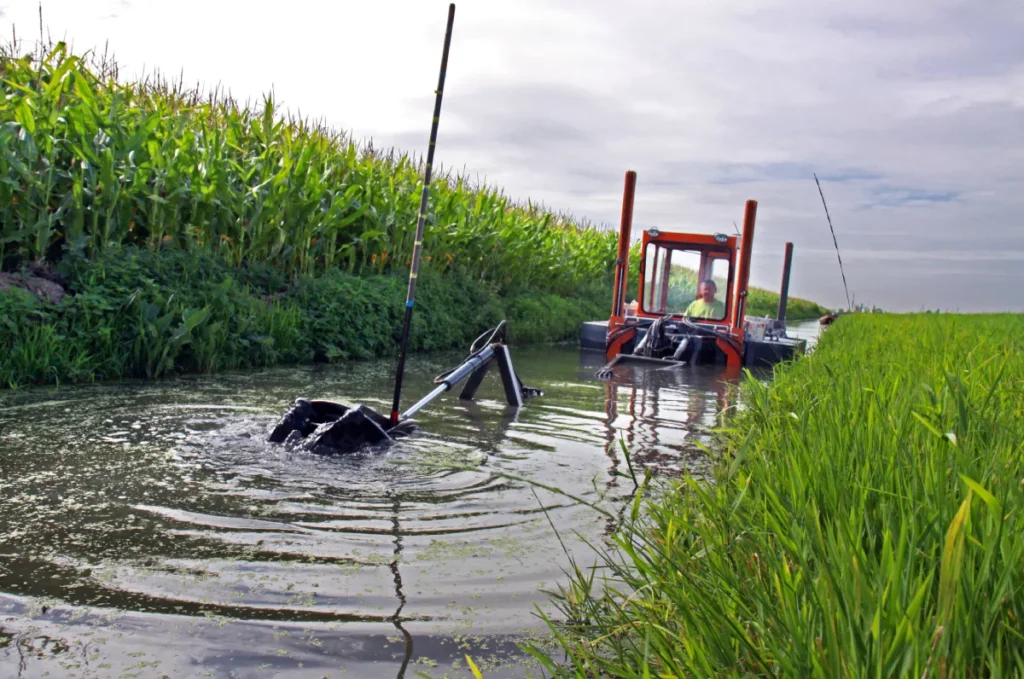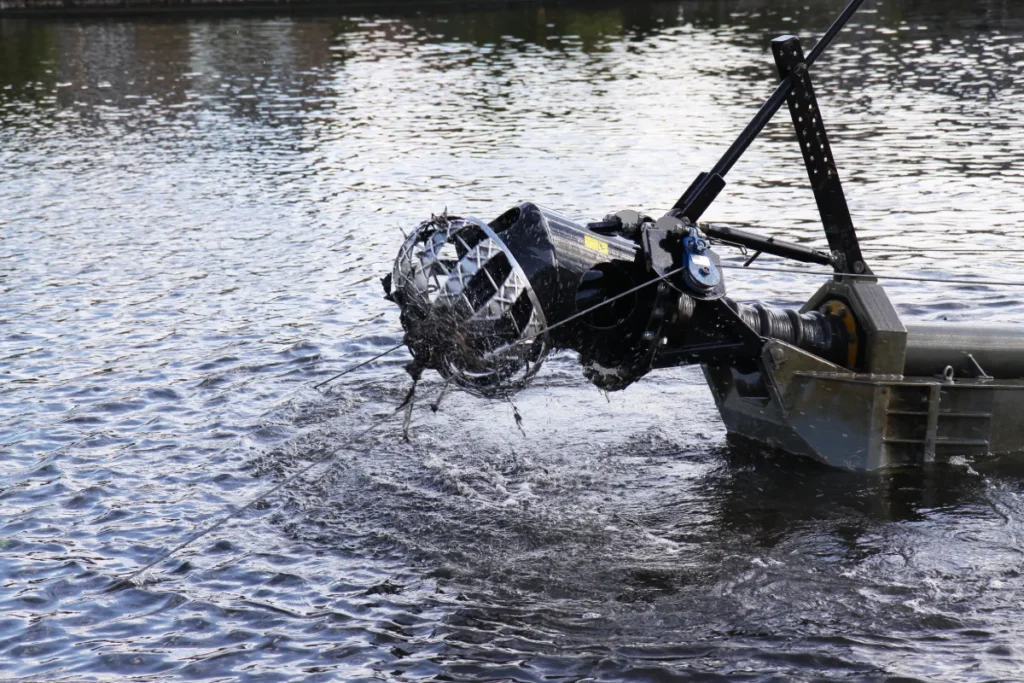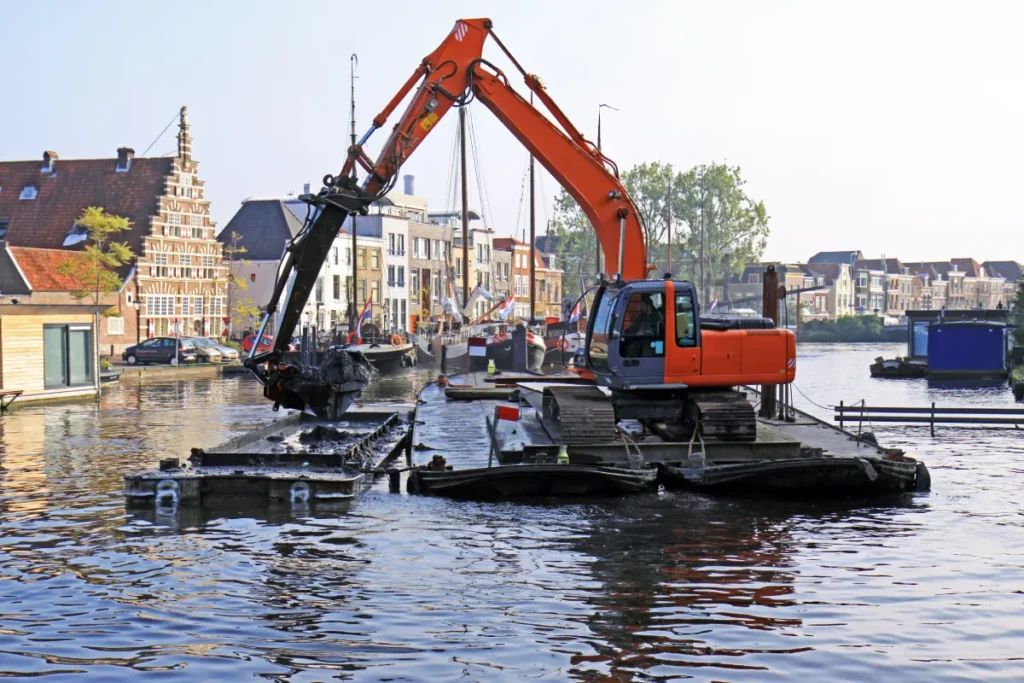Urban water management is a critical aspect of modern city planning and infrastructure development. As urbanization increases, managing the health and functionality of waterways becomes essential for preventing flooding, preserving ecosystems, and supporting urban growth. Small dredging equipment plays a pivotal role in this process, offering a flexible and efficient solution for sediment removal, pollution control, and maintenance of waterway depth. This blog will explore the importance of small dredging equipment in urban water management, including its applications, benefits, and the different types of equipment used for such tasks.
Targeted at procurement heads, engineering managers, contractors, and decision-makers across various sectors, this blog aims to provide a comprehensive understanding of how small dredging equipment can support urban water management projects while delivering significant returns on investment (ROI).
The Importance of Urban Water Management
Flood Prevention
One of the most pressing concerns in urban water management is the risk of flooding. Urban areas often face challenges such as clogged drainage systems, narrow canals, and obstructed rivers. Small dredging equipment is crucial in mitigating these risks by clearing sediments and debris that may impede the flow of water. By using small dredging equipment, waterway capacity is increased, enabling them to accommodate higher volumes of rainfall and runoff. In areas with limited space or shallow waterbeds, small pond dredging becomes a key solution for maintaining proper drainage and reducing the likelihood of localized flooding. In some areas, gold dredging equipment can also be used to clear smaller water features, such as ponds or recreational areas, where sediment removal is necessary to prevent future flooding.
Ecosystem Protection
Healthy aquatic ecosystems are vital to the overall environmental health of urban areas. Dredging is an essential tool for maintaining these ecosystems by removing polluted sediments, excess vegetation, and other contaminants from waterways. Small dredging equipment is ideal for use in urban environments, as it allows for precise sediment removal without disturbing the surrounding habitat. Regular use of small-sized dredging equipment helps restore the natural balance of waterways, supporting local wildlife and preserving biodiversity. Additionally, gold dredging equipment used in recreational or industrial gold mining applications can also be part of this effort by clearing out accumulated sediments that may affect water quality. Small pond dredging is particularly important for maintaining water quality in urban ponds and lakes, which can otherwise become overgrown with debris and harmful sediments.
Infrastructure Support
Urban development often requires the construction of bridges, docks, and other waterfront structures. Dredging plays a critical role in providing solid foundations for these structures by ensuring that waterways are deep enough for construction materials to be delivered and to prevent settlement issues. Small dredging equipment can be used to maintain navigable channels for boats and barges, facilitating the transport of construction materials. In urban settings where space is constrained, small pond dredging is an effective way to manage the shallow, confined spaces where larger dredging equipment may not be feasible. In some cases, gold dredging equipment is also used for clearing recreational or small urban water bodies, ensuring they remain accessible for various public and commercial uses.
Water Quality Enhancement
Improving water quality is another significant reason for employing small dredging equipment in urban water management. Over time, pollutants such as heavy metals, oil, and nutrients accumulate in water bodies, leading to reduced water quality and potential health risks for residents. The precision of small dredging equipment makes it an excellent choice for clearing out these pollutants, particularly in smaller, more confined environments such as ponds and canals. Gold dredging equipment is also often utilized for targeted sediment removal, ensuring that areas prone to contamination can be cleaned efficiently. By using small pond dredging for maintaining urban lakes and recreational areas, cities can improve water quality, reduce contamination, and ensure that these bodies of water remain healthy and safe for public use.
Each of these applications highlights the importance of small-sized dredging equipment in urban water management, making it an essential tool for improving flood resilience, preserving ecosystems, supporting infrastructure, and enhancing water quality.
Types of Small Dredging Equipment

Plain Suction Dredgers
Small dredging equipment, such as a plain suction dredger, is ideal for small-scale sediment removal in urban canals, rivers, and lakes. These dredgers use suction pipes to remove fine sediments like sand, silt, and mud from the bottom of water bodies, maintaining navigable depths and preventing sediment buildup that could obstruct water flow. Small dredging equipment, like a suction dredger, is particularly effective in urban settings, where there is a need to manage confined spaces and delicate ecosystems. Whether clearing canals or maintaining waterway depths, plain suction dredgers are an essential tool in urban water management.
Portable and Submersible Pumps
For shallow, confined, and hard-to-reach environments, small-sized dredging equipment like portable and submersible pumps is highly effective. These pumps are designed to remove both sediment and pollutants, including debris and contaminants from industrial runoff. In urban areas, where water depths are often limited, small pond dredging is necessary to ensure the water remains clean and navigable. Portable and submersible pumps are excellent for removing pollutants from small, shallow water bodies, such as ponds, lakes, and even stormwater systems. The versatility of small dredging equipment like these pumps allows for quick and efficient sediment removal with minimal disruption to the surrounding environment.
Backhoe Dredgers
Backhoe dredgers are another type of small-sized dredging equipment that is essential for hard-to-reach or shallow water locations. Mounted on pontoons or tracks, these machines can access water bodies with difficult terrain or minimal water depth. Small dredging equipment, like backhoe dredgers, is commonly used for dredging in small ponds, canals, or reservoirs where other equipment may not be suitable. Their hydraulic excavators make them versatile and effective in removing compacted sediment, plant material, and other debris. Backhoe dredgers are indispensable for targeted dredging projects, particularly when urban waterways need selective sediment removal.
Clamshell Dredgers
Clamshell dredgers are commonly used in confined spaces, such as smaller ponds and water bodies, where larger dredging equipment cannot operate efficiently. The clamshell bucket, which opens and closes like a shell, is designed to grab sediment and debris from the waterbed, lifting it onto the shore for removal. Small pond dredging projects benefit from the precision and control that clamshell dredgers provide, allowing for sediment removal in shallow or confined water bodies. These machines are excellent for maintaining small urban water features such as decorative ponds, park lakes, and recreational areas.
Gold Dredging Equipment
Specialized gold dredging equipment is used for smaller dredging projects in recreational areas, such as gold panning sites or small-scale mining operations. This equipment is designed to extract fine sediments from riverbeds or ponds, which may contain valuable minerals. Gold dredging equipment is compact and can be operated in urban waterways with ease, providing a solution for recreational activities or small mining projects. Whether in small ponds or recreational lakes, gold dredging equipment offers an efficient method of sediment removal without damaging the environment or aquatic life. These machines are also beneficial for small urban water management tasks, ensuring that sediment levels remain under control.
The Benefits of Using Small Dredging Equipment
Cost-Effectiveness
Small dredging equipment is highly cost-effective, making it an ideal choice for small to medium-sized urban water management projects. Compared to large dredging machines, which are often expensive to operate and maintain, these machines offer significant savings without compromising on performance. In urban environments, where projects may be limited by space or budget, their affordability makes them an attractive solution for city planners and contractors looking to manage waterway maintenance efficiently. Whether for flood mitigation or routine sediment removal, this equipment ensures projects are completed on time and within budget.
Efficiency
The efficiency of small-sized dredging equipment is a key benefit, especially in urban environments with tight spaces or shallow areas. These machines are designed for fast operations, allowing for quicker sediment removal than larger, bulkier machinery. This makes them especially valuable for projects where time is critical, such as during flood season or when maintaining recreational spaces. Gold dredging equipment, often used for smaller dredging projects in confined spaces, benefits from this efficiency, providing rapid results with minimal disruption. Similarly, small pond dredging is made quicker and more effective with compact equipment, ensuring urban lakes and ponds are properly maintained without delays.
Flexibility
Another significant advantage of small dredging equipment is its flexibility. These machines can be easily deployed in a wide variety of urban environments, from narrow canals to small lakes and ponds. Their versatility makes them suitable for different dredging tasks, whether it’s used for deepening waterways, removing accumulated sediments, or restoring water quality. Small pond dredging is an ideal application of this flexibility, as it allows operators to target confined areas where larger equipment would be too cumbersome. Gold dredging equipment also benefits from this adaptability, as it can be used in a range of small-scale applications, such as gold panning sites, urban ponds, or recreational lakes.
Minimal Environmental Impact
Small dredging equipment offers a significant environmental advantage over larger dredging machines. These machines are less intrusive, which makes them ideal for use in sensitive or protected environments. Small dredgers can be used to precisely target sediment removal without disturbing surrounding ecosystems or water quality. This is particularly important in urban areas, where maintaining the ecological balance of local water bodies is essential for preserving biodiversity. Gold dredging equipment, often used in smaller, more controlled areas, also minimizes the environmental footprint, ensuring that sediment removal does not cause unnecessary damage. Furthermore, small pond dredging can be done with minimal disruption to plant and animal life, promoting the long-term health of urban water features.
Improved Waterway Health
Ongoing maintenance with small-sized dredging equipment helps ensure clean and healthy aquatic ecosystems in urban waterways. By regularly removing sediment buildup, pollutants, and debris, these machines prevent the degradation of water quality, which can otherwise lead to stagnant or contaminated water. Gold dredging equipment also plays a role in this by removing heavy metals or toxins from the waterbed, particularly in recreational and mining areas. Small pond dredging is vital for keeping urban lakes and ponds free of excess vegetation, pollutants, and debris, ultimately enhancing water quality and supporting healthier aquatic environments. Regular use of these machines ensures that urban waterways remain clean, functional, and environmentally safe for both wildlife and the public.
Real-World Applications of Small Dredging Equipment

Urban Waterways and Stormwater Management
Small dredging equipment has proven invaluable in urban stormwater management projects. In cities where canals, rivers, and drainage systems are critical to preventing flooding, these machines are used to clear blockages, remove sediment, and restore waterway depth. For example, many cities have successfully used small dredgers to clear canals and drainage systems of sediment buildup, increasing their capacity to handle stormwater runoff. These dredging projects not only prevent flooding but also improve the efficiency of the overall stormwater system, ensuring that infrastructure can cope with heavy rainfall. Gold dredging equipment is also sometimes used in recreational waterway maintenance, where smaller dredging tasks are required to keep water features accessible and attractive.
Pond and Small Lake Maintenance
Small dredging equipment is particularly beneficial for maintaining urban ponds, lakes, and other recreational water features. Over time, these water bodies accumulate excess sediment, debris, and organic material that can impact water quality and aesthetic value. Small pond dredging helps maintain these areas by clearing away unwanted material and preventing water stagnation. In addition, this equipment can be used to improve the functionality of these water features, ensuring they remain clean and accessible for public use. Whether in community parks, private properties, or public spaces, small dredging equipment ensures that ponds and lakes stay healthy, functional, and visually appealing for both residents and tourists.
Industrial Waste Management
In industrial zones, small-sized dredging equipment is used to remove contaminants from water bodies and prevent waterway pollution. Industrial runoff often contains harmful pollutants like chemicals, heavy metals, and debris that can negatively affect local ecosystems and water quality. By using small-sized dredging equipment, these contaminants can be removed efficiently, ensuring that industrial water bodies remain compliant with environmental regulations. For areas with smaller water features or limited access, small pond dredging is a particularly effective solution for ensuring that industrial waste is properly managed. Additionally, gold dredging equipment can help remove sediments from smaller industrial ponds, ensuring that they do not contribute to waterway contamination. Regular use of these machines in industrial zones is essential for maintaining compliance with environmental standards and protecting local water resources.
These real-world applications demonstrate the versatility and effectiveness of small dredging equipment in urban water management, from flood prevention to recreational space maintenance and industrial waste management.
Selecting the Right Small Dredging Equipment for Your Project
Factors to Consider: Water Depth, Sediment Type, and Environmental Considerations
When selecting small dredging equipment for a project, it’s important to evaluate several factors that can impact the effectiveness and efficiency of the dredging operation. Water depth is a critical consideration, as different machines are suited for different depths. Shallow areas, such as ponds and smaller lakes, often require small-sized dredging equipment that is compact and easy to maneuver. Similarly, the type of sediment is another crucial factor; if you are dealing with fine sediments like silt or clay, a suction dredger or portable pump may be ideal. In contrast, harder materials such as compacted soil may require small-sized dredging equipment with more powerful excavation capabilities, such as a backhoe dredger. Additionally, environmental considerations are essential—opt for equipment that minimizes environmental impact, such as gold dredging equipment or small pond dredging machines designed for minimal disruption to sensitive ecosystems.
Choosing the Right Equipment: How to Decide Between Different Types of Small Dredging Equipment Based on Project Needs
Choosing the right small-sized dredging equipment requires assessing the specific needs of your project. If the project involves clearing fine sediments in confined spaces, a plain suction dredger or portable pump might be the best option. For deeper dredging in hard-to-reach areas, backhoe dredgers or clamshell dredgers could provide the necessary power and precision. Gold dredging equipment is often suited for recreational or industrial areas where small-scale sediment removal is needed. If your project involves cleaning out urban ponds or recreational lakes, small pond dredging equipment designed for smaller, shallow environments is ideal. Understanding the scale and specific challenges of your project will help you select the most appropriate equipment to achieve the desired outcomes efficiently.
Maintenance and Operation: Tips for Ensuring the Longevity and Optimal Performance of Small Dredging Machinery
To ensure the longevity and optimal performance of your small dredging equipment, proper maintenance is essential. Regular inspections are key to identifying any wear or damage that could affect performance. For example, checking for blockages in suction pipes, inspecting hoses for wear and tear, and ensuring that moving parts are properly lubricated are all crucial maintenance tasks. Additionally, keeping the equipment clean and free from debris will help prolong its lifespan. Operators should also follow manufacturer guidelines for operation and maintenance to prevent premature wear and ensure efficient performance throughout the project. For specialized equipment like gold dredging equipment, proper storage and handling are equally important, particularly when dealing with delicate parts designed for fine sediment extraction. By investing in routine care and addressing issues promptly, you can maximize the performance and durability of your small-sized dredging equipment.
ROI and Long-Term Benefits of Small Dredging Equipment in Urban Water Management

Cost vs. Long-Term Gains: Analyzing the Financial Implications of Investing in Small Dredging Equipment
Investing in small-sized dredging equipment offers significant long-term financial benefits, despite the initial purchase or rental costs. The affordability of this equipment makes it a viable option for smaller-scale projects, such as small pond dredging and urban waterway maintenance. These investments can lead to substantial savings in maintenance costs and flood-related damages. For example, regular use of small-sized dredging equipment can prevent the buildup of sediment that leads to flooding, reducing the need for costly emergency repairs. Over time, the savings generated by avoiding flood damage, improving waterway capacity, and maintaining recreational water features often outweigh the initial costs. Additionally, gold dredging equipment, which is designed for specific small-scale applications, can offer a high return on investment for recreational or industrial projects, making it a financially sound investment for niche needs.
Environmental and Social ROI: The Broader Impact of Improved Water Quality and Flood Resilience
Beyond financial returns, the environmental and social ROI of using small dredging equipment is considerable. The removal of sediment, debris, and pollutants from urban waterways leads to improved water quality, which has a direct positive impact on local ecosystems and public health. Cleaner waterways support healthier aquatic life and contribute to better-quality recreational spaces, which enhances the well-being of communities. Additionally, small-sized dredging equipment helps mitigate flood risks by maintaining waterways at optimal depths, improving the resilience of urban areas to extreme weather events. The long-term environmental and social benefits, such as improved public health and reduced flooding, significantly enhance the value of investing in these tools for urban water management.
Government and Municipal Projects: Benefits for Local Governments and Municipalities, Focusing on Urban Waterway Maintenance
For local governments and municipalities, investing in small-sized dredging equipment is a practical solution for maintaining urban waterways and stormwater systems. Regular dredging projects ensure that canals, rivers, and ponds remain navigable, flood-resistant, and clean, improving the quality of life for residents. Small pond dredging is particularly useful for municipal projects aimed at maintaining park ponds, lakes, and other public water features that serve both aesthetic and recreational purposes. By ensuring the continued functionality and health of these spaces, local governments can enhance urban livability and reduce costs associated with emergency flooding or waterway blockages. For projects requiring more precise sediment removal, such as gold mining or recreational area maintenance, gold dredging equipment can also be a valuable asset for municipal governments. These investments not only improve the environmental conditions of urban waterways but also contribute to the city’s economic growth by maintaining and enhancing public infrastructure.
In summary, the long-term benefits of small dredging equipment go beyond immediate financial savings, offering both environmental and social advantages that improve the overall quality of urban living. By selecting the right equipment and investing in regular maintenance, cities and municipalities can reap the rewards of improved water quality, reduced flooding risks, and enhanced public spaces.
Conclusion
Small dredging equipment plays a vital role in urban water management, offering a cost-effective, efficient, and environmentally friendly solution for maintaining and enhancing waterway health. From flood prevention and pollution control to supporting urban infrastructure and recreational spaces, these machines are essential in addressing the unique challenges faced by cities and municipalities. By selecting the right equipment for specific project needs—whether it’s small pond dredging or specialized gold dredging equipment—urban planners and contractors can ensure that water bodies remain functional, clean, and resilient to environmental challenges.
The versatility and precision of small dredging equipment make it an invaluable asset for a wide range of urban waterway management tasks. Whether for deepening canals, clearing out accumulated debris, or restoring aquatic ecosystems, these machines offer effective and sustainable solutions that directly contribute to the long-term health of urban water systems.
Procurement managers and contractors are encouraged to explore the range of available small dredging solutions to ensure the success of their waterway maintenance and management projects. Investing in the right equipment will not only improve the environmental health of urban areas but also enhance public spaces, prevent costly flood damage, and improve the overall quality of life for residents.


